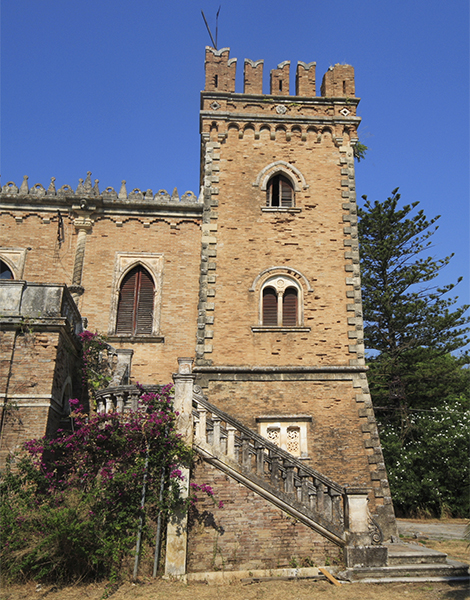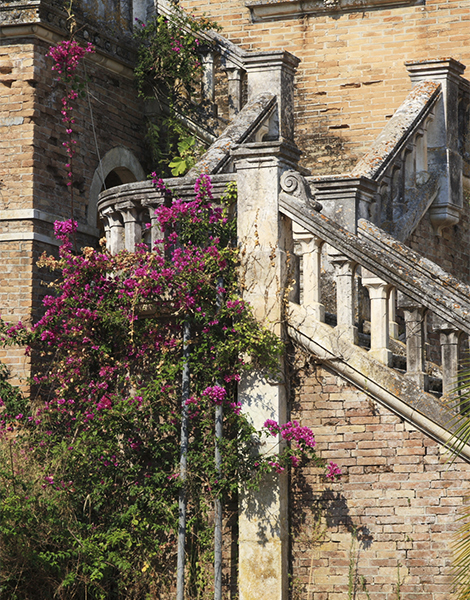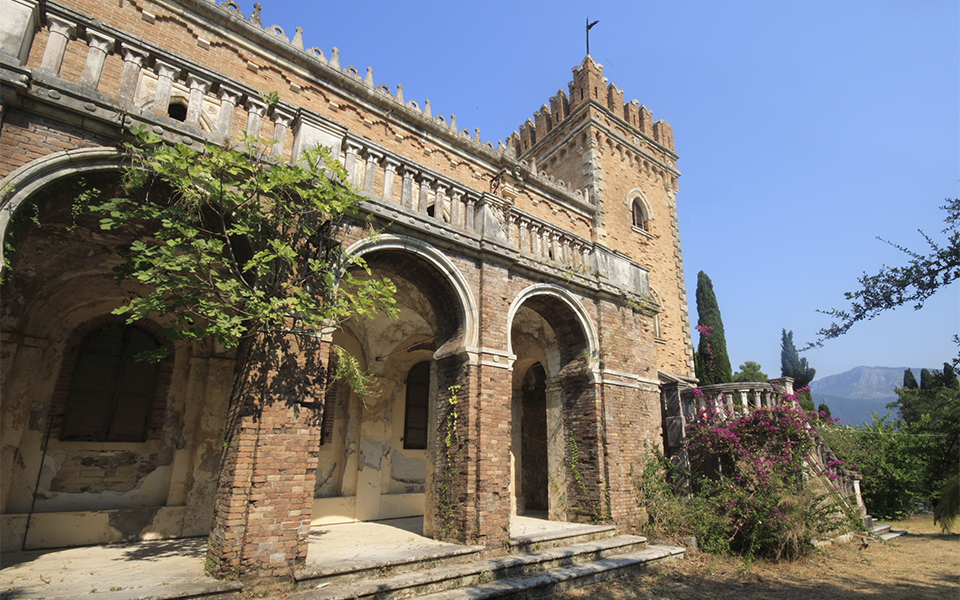Castello,outside the village of Kato Korakiana, near Corfu’s main town and Dasias beach, is by many considered emblematic of the island at the turn of the 19th century. The Italianate building served as a hotel during the advent of tourism on the island in the 1960s, and images of its elegant facade featured on many a postcard. Officially known as Castello Bibelli, surrounded by green space and other structures encompassing a total area of around 77,000 square meters, it has fallen into disrepair over the years.
Today, Castello is among the Greek state-owned properties that have been handed over to the Hellenic Republic Asset Development Fund (TAIPED) to be sold to or utilized by investors. The tender has been launched and potential investors recently submitted their proposals to TAIPED for commercial use of a part of the property.
Castello Bibelli and three auxiliary buildings on the estate are listed monuments. Legally, it can be used for various purposes by whomever chooses to invest in it, with an emphasis on the historic tower, which is nearly 2,000 square meters and could be turned into a five-star boutique hotel. The greenery and several smaller structures surrounding it could be incorporated into such an establishment as well. The area also contains the Corfu annex of the National Gallery, which is located in the Castellino.

© Shutterstock

© Shutterstock
The Castellino is protected by a 30 meter buffer zone within which the building of any kind of structure is not allowed. Castello Bibelli has a 100 meter buffer zone of this kind. Any new structures that are built on the property outside these areas must blend aesthetically with the existing ones.
Castello Bibelli’s value extends beyond its aesthetic appeal. It was built by the Italian baron Luca Mimbelli in 1905. At the time the hilly area was overgrown with trees and shrubs and littered with the ruins of old abandoned houses. Mimbelli was married to Fani Rodokanaki, who inherited the land from the Polila family. When Castello Bibelli was built, it soon became a meeting place for important visitors to the island, and beyond the edifice itself was admired for its furniture, decor and heirlooms, as well as its exotic garden with lush vegetation.
By World War II, however, it had been abandoned by the family. It was then used as a military hospital and a German commander’s living quarters, only to be deserted again after the war. In 1957, businessman Stavros Bouas made a deal with the state to rent it for the next 25 years and in 1958 he opened a hotel which operated until the early 1980s.
The architectural style of Castello Bibelli emerged in the period between 1870 and the First World War, when many elegant villas were built in various prime locations along the coast of the Adriatic Sea and on the Ionian Islands. In many ways it resembles the famed Miramare Castle, built for Austrian Archduke Ferdinand Maximilian and his wife, Charlotte of Belgium, in Trieste, Italy.











